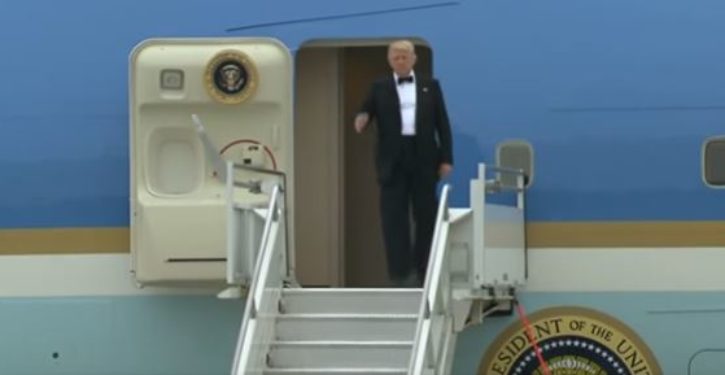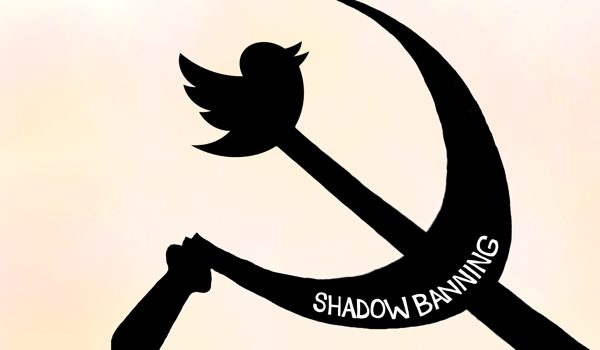
Donald Trump’s 2016 victory breathed new life into the notion that big-ego celebrities and billionaires could run for president and win.
It is thus no surprise that after giving a rousing Hollywood speech, Oprah Winfrey was instantly anointed the next celebrity president by the “Gods of Hollywood” and their media cheerleaders. That proclamation, magnified by an oversaturation of media coverage, lead to a Jan. 10 Rasmussen poll that had Oprah ahead of President Trump 48% to 38% in a 2020 match-up.
But no sane viewer, even of “Entertainment Tonight,” believes that 10-point spread would hold until Election Day 2020.
Will this presidential election be the most important in American history?
Meanwhile, in the newly created “billionaire celebrity primary” division of the “people’s” Democratic party, “president-elect” Oprah could potentially face a squad of billionaire businessmen opponents. This group includes Starbucks founder and executive chairman Howard Schultz; Facebook CEO Mark Zuckerberg; Dallas Mavericks owner and “Shark Tank” star Mark Cuban; and political activist Tom Steyer, the climate change mega-funder, who has recently gained fame starring in his own, “Need to Impeach Trump” television commercials.
But before Oprah and the boys form their 2020 exploratory committees, it would behoove them to study “how Trump did it” and glean a host of valuable lessons.
Lesson One: Two years of pre-presidential announcement planning and action
On June 17, 2015, Donald Trump did not ride the Trump Tower escalator to his announcement speech because he awoke that morning impulsively believing that he could defeat Hillary Clinton. In fact, Trump’s announcement was the harvest of carefully orchestrated seeds planted in 2013 shortly after President Obama’s 2012 reelection.
Lesson Two: Research
The first clue that Trump was planning a serious presidential run occurred on May 27, 2013, in the New York Post’s gossipy “Page Six,” with the headline: Trump Researching 2016 Run.Immediately, Politico followed with the headline: “Report: Trump spends $1 million on 2016 research.”
The key quote appearing in both reports was from Michael Cohen, Trump’s executive vice president and special counsel who said: “The electoral research was commissioned. We did not spend $1 million on this research for it just to sit on my bookshelf.”
After reading Cohen’s statement, and doing some research, I was intrigued by the prospects of a Trump candidacy. Thus, on June 18, 2013, I wrote a piece headlined: “Why it looks like Donald Trump is really running for president in 2016.”
Undoubtedly, Trump’s research must have revealed that the 2016 Republican field was wide open and lacked a candidate with the necessary star-power to defeat the inevitable candidacy of Hillary Clinton. (Ironically, similar to where the Democrats find them themselves today, lacking a political office-holder candidate with enough star-power potentially to defeat Trump in 2020.)
All of my political friends laughed at my piece believing that Trump was a big-mouth narcissist looking to boost his television show ratings and enhance his name-brand for increased licensing fees. There was much accuracy in that thinking since Trump had previously teased the media with his 2012 presidential rumblings. But, in 2013 Trump’s actions were sending vastly different signals, as discussed in the next lesson.
Lesson Three: Roll around in the grassroots
Starting early in 2013 Trump was orchestrating a politically strategic initiative that could not be ignored. He was continuously traveling the nation courting Republican grassroots activists and conservative Christian evangelicals. By attending and speaking at their events, he tremendously boosted their organizations’ revenues with his star power, further endearing himself to them. (Note: In the 2016 general election Trump overwhelming won the Christian evangelical vote.)
Lesson Four: Consistent message
During 2013, Trump hammered home a simple, emotional, and consistent message at all the grass-roots events. For example, he said in a speech:
We have to start manufacturing and building again, and we have to make America great again. Our problems will be solved. Thank you very much. It’s a great honor.
Sound familiar? That was Trump’s last sentence from his March 15, 2013, speech at the annual Conservative Political Action Conference (CPAC). In fact, the entire transcript sounds like his 2016 campaign.
Lesson Five: Beg me to run
Two months after his rousing CPAC speech, on May 21, 2013, Trump spoke at the Oakland County Republican Party Lincoln Day Dinner in Novi, Mich (aka fly-over country [and even more amazing, “blue” state fly-over country]). There, on a Tuesday night, Trump drew a crowd of 2,300 – the largest attendance in the event’s history. The local Oakland Press reported:
When asked at a conference prior to the dinner if he would consider running for political office, he said, “Highly unlikely,” adding:
Everybody tells me, ‘Please run for president. Please run for president.’ I would be much happier if a great and competent person came along. I’d be happy if President Obama did a great job. I’m a Republican, but before anything, I love this country. I would love to see somebody come in who is going to be great.
Obviously, by June 17, 2015, Trump concluded that “somebody” was him. (Note: Trump was the first Republican presidential nominee to win Michigan since George H. W. Bush in 1988.)
A key lesson for potential members of the Democrat “billionaire celebrity primary” is “play hard to get” while making yourself available at the “county fair.” It’s the folks in “flyover country” that must beg you to run – not just the New York and Hollywood crowds.
These five lessons add up to tiring grunt work and total dedication to the goal of winning the White House at all costs.
To launch a serious presidential run as a celebrity with no prior elective experience takes years of travel to places where billionaires don’t usually go. Moreover, you must court and speak often to party activists, coupled with a simple, compelling and consistent message that suggests a long-term strategic plan. There needs to be a seriousness about your solutions to key problems while knocking down your potential opponent.
The best early example of Trump doing all of the above was on Saturday, Aug. 10, 2013, in Ames, Iowa. Here is the lede of an NBC news report by Kasie Hunt headlined: “In Iowa, Donald Trump warns Republicans about Hillary, immigration.”
AMES, Iowa — Donald Trump on Saturday made his first-ever political visit to Iowa, speaking to conservative Christians, stoking speculation about his political plans and labeling the United States a “laughingstock” during an interview with NBC News.
He warned the Family Leadership Summit in an evening speech that Republicans will have a “really tough” time in the 2016 presidential race if Hillary Clinton runs.
Finally, here is a “really tough” lesson for Oprah and the billionaires: Mock Trump at your own peril. Remember that when Trump took his now infamous June 2015 escalator ride down to the marble floor of Trump Tower – years before he had traveled across many floors covered with cheap linoleum and sawdust.
Cross posted at RedState




